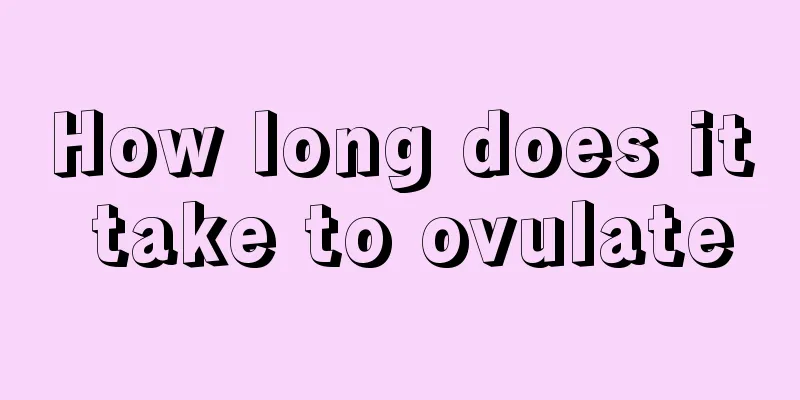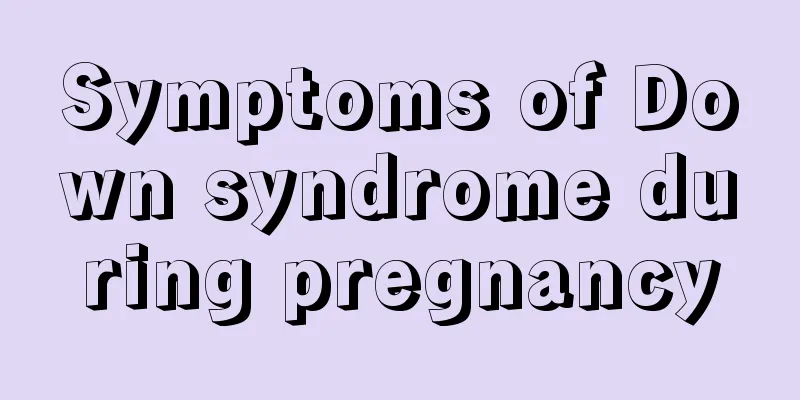How long does it take to ovulate

|
For women, ovulation occurs after the ovaries mature. The ovulation period is usually between two menstrual periods. Because the symptoms in the body are relatively mild, we cannot judge the ovulation period by the physical condition. You can only calculate according to your own menstrual period. So how long does ovulation take? Generally speaking, a woman's ovulation period is about 3-7 days. The exact mechanisms and details of ovulation are not well understood. However, before and after ovulation, the feedback regulation reaction between FSH, LH, estrogen and gonadotropin-releasing hormone (GnRH) secreted by the hypothalamus in the body leads to regular and drastic changes in hormone levels before ovulation, which is the inducement for ovulation and the formation of corpus luteum after ovulation. It has been observed that three hormone peaks play an important role in the occurrence of ovulation: the first estrogen peak occurs, inducing an increase in GnRH release, thereby triggering the almost synchronous secretion peaks of LH and FSH. In the process of inducing ovulation, FSH and LH must work synergistically. Only when a certain ratio of FSH and LH work together can ovulation be effectively induced. When LH is used alone to induce ovulation, all the follicles recruited by the ovaries will rupture. When a certain ratio of FSH and LH is used to induce ovulation, only mature follicles will rupture and ovulate. The exact mechanism by which this phenomenon occurs is unclear. (1) Decreased follicle wall tension Before ovulation, the pituitary gland secretes more LH, which can promote the secretion of progesterone. The latter prompts the ovaries to synthesize a variety of enzymes, which denature the proteoglycans that act as adhesion between the collagen fibers in the top tissue of the mature follicle, thereby reducing the tension of the follicle wall. (2) Enzyme dissolves the follicle wall It has been proven that there are proteolytic enzymes, amylase, collagenase, hyaluronidase, etc. in follicular fluid. Therefore, it is believed that ovulation is caused by the above enzymes dissolving and rupturing the follicle wall, leading to ovulation. (3) Related to prostaglandins LH can promote the synthesis of prostaglandins by granulosa cells, and the PG content in mature follicles increases progressively as ovulation approaches. PG2α can promote the contraction of smooth muscle fibers in the interstitial tissue surrounding the follicle, causing the follicle to rupture and ovulate. |
<<: Is the shrinking of the ovarian follicle a sign of ovulation or atrophy?
>>: How long does it take to ovulate after abortion?
Recommend
Now I know why I often feel dizzy!
Dizziness is a common thing in daily life. Someti...
Where is the pubic bone?
There are various positions in our human body, an...
There is a hard lump next to the vulva
What causes a hard lump next to the vulva? In fac...
What are the dangers of irregular menstruation in women?
The "period" that female friends have e...
Are breast lymph nodes serious?
Lymph nodes are a relatively important tissue in ...
How to regulate thin endometrium, diet therapy is effective
Dietary adjustments, Western medicine treatment, ...
What does rose tea taste like? Is rose tea acidic or alkaline?
Rose tea has a mild nature. It can soothe emotion...
Long periods of sitting may increase the risk of kidney stones, while glucosamine supplementation may reduce the risk
Kidney stones are a common disease, affecting app...
Is there a high chance of pregnancy with an IUD?
We all know that the IUD is a method of contracep...
How to draw eyeliner
Eyes are the windows to the soul, and having a pa...
Young people should not take influenza lightly
Not long ago, Ms. Wang, who was only 32 years old...
Is it good to drink pure milk in early pregnancy? Is it good to drink pure milk during pregnancy?
The baby grows and develops in the mother's w...
Can you still eat expired salted duck eggs? Why does the yolk of salted duck eggs leak oil, but ordinary duck eggs don't?
Salted duck eggs are a Chinese specialty. They we...
How to make breasts grow bigger
33 How to make breasts grow Breasts are important...
Dull pain above left breast
When a woman feels a dull pain above the left bre...









